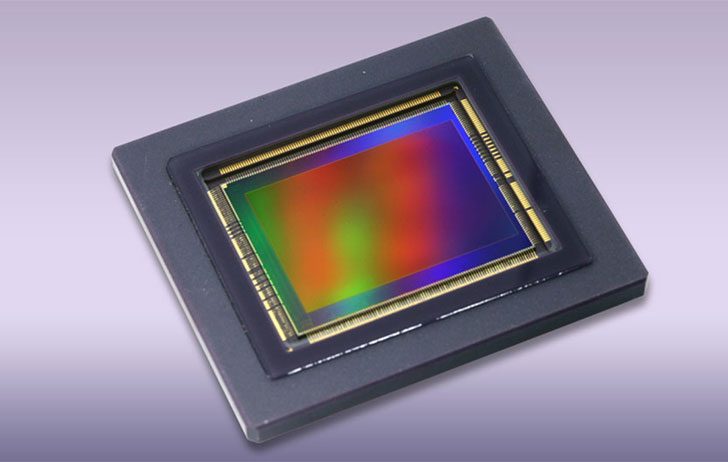MELVILLE, N.Y., November 1, 2018 – Image sensors are an important driving force behind many of today’s successful brands, ranging from consumer products to industrial solutions. Today, Canon U.S.A, a leader in digital imaging solutions, announces that it is now offering select CMOS (complementary metal-oxide semiconductors) sensor products for sale to the industrial marketplace. Manufacturers, solutions providers and integrators who are searching for advanced components to create their own unique products and solutions can now utilize Canon’s patented technology to help them create these products and solutions and expand their business potential.
“For several decades, Canon has been a leader in developing and manufacturing advanced CMOS sensors with state-of-the-art technologies, which until now, were for exclusive use in Canon products,” said Kazuto Ogawa, president and chief operating officer, Canon U.S.A., Inc. “It was a natural evolution to expand into a new business platform that leverages our expertise in sensor manufacturing to target the growing market demands for high-quality industrial imaging solutions.”
Launching this new business, Canon will be showcasing its CMOS sensors at VISION, the world’s leading trade fair for machine vision, on Tuesday, November 6 through Thursday, November 8, 2018, in Stuttgart, Germany. Attendees are invited to visit Hall 1 – Stand 1G74 to explore Canon’s CMOS sensor products and the variety of applications that can potentially be enhanced, including machine vision, inspection, surveillance, drones, traffic-monitoring systems and other industrial applications.
Canon sensors on display include:
- 3U5MGXS CMOS Sensor – with an electronic global shutter, and an all pixel progressive reading at 120fps, the Canon 3U5MGXS CMOS 5MP sensor offers fast image capture with low power consumption. This helps to accurately capture images of subjects moving at high speeds without distortion to meet such industrial needs as medical imaging and inspecting parts during the manufacturing process. The Canon 3U5MGXS is now available.
- 35MMFHDXSCA CMOS Sensor – featuring an enormous 19um pixel pitch, the 35MMFHDXSCA CMOS sensor is capable of capturing color images in exceptionally low-light environments where the naked eye struggles to distinguish objects. Using new pixel and readout circuitry technologies that deliver a 2.76 megapixel resolution, these sensors can support a wide range of applications which require ultra-high sensitivity image capture, including defense, astronomy, surveillance and industrial operations. The Canon 35MMFHDXSCA is now available.
- 120MXS CMOS Sensor – by incorporating close to the same number of pixels as photoreceptors in the human eye, the Canon 120MXS CMOS sensor delivers ultra-high 120 MP resolution at 9.4fps in a compact APS-H format. This sensor targets the needs of the inspection, aerial mapping, life sciences, digital archiving and transportation industries. The Canon 120MXS is now available.
- 2U250MRXS CMOS Sensor – with a readout speed of 1.25 billion pixels per second, the prototype 2U250MRXS CMOS sensor, delivers ultra-high 250MP resolution in a compact APS-H format. Through advancements in circuit miniaturization and enhanced signal processing, this sensor delivers high resolution with incredible sensitivity and low noise.
For more information on Canon sensors, please visit canon-cmos-sensors.com.


And I also wonder where Canon gets there R&D talent from. Worldwide? Or do they stick with mostly Japanese? Just curious.
that will get some money into R&D and it will help distribute sensor development cost over more than the shrinking consumer camera market.
that is is one benefit sony has.... they can distribute R&D cost over millions and millions of smartphone sensors.
https://www.canonrumors.com/forum/i...elopment-and-why-canon-has-a-hard-time.35824/
some time ago means around 2016.
Now, if only
* Canon sells me 5D 4/EOS R sensors at an excellent price in exchange for giving up an AA filter on them :LOL:
* and Leica licenses L-mount to me
* and Samyang makes their ultra-compact AF lenses in L-mount
I might launch a "really-right, ultra-compact, decent IQ, well-affordable FF MILC system" on kickstarter. :love: :D
Early-bird pre-orders from as low as 999 ! :p
Sounds right, I did not look up the date. Of course, they sold them before then but did not market them. Apparently they see the need or benefit from the industrial market. Canon has some fantastic monochrome sensors for machine vision.
Now if Canon can get the global shutter, DPAF or better at about 40 FPS in a 60 megapixel FF sensor with a great DR, High ISO and low noise as well as maintain their incredible color science. Not asking for much. I would willingly accept a very weak AA filter on the camera to improve performance without the fake edge crap going on with those that don't have the AA filter.
The good thing for consumer camera market is that the hardware and software to match the new sensors needs to be current and that technology will trickle down to the consumer cameras, too.